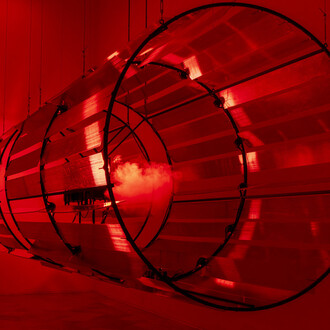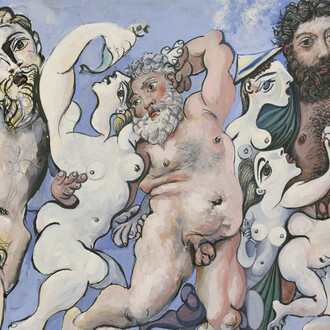Martha Araújo's new show at the gallery is articulated around a less known body of work never shown in Spain before. This curatorial proposal reunites a group of pieces which emerged from a project held in 1986. Under the title of Para um corpo... [Fo a body…] Martha Araújo created a group of intimate pieces which were named after these suggestive and poetic titles such as Para um corpo pleno de vazios [for a body full of voids], Para um corpo e o seu duplo [For a body and its double] e Para um corpo de desejos adormecidos [For a body of sleepy desires].
Here the artist deals with some of her main concerns: the personal relation to “the other”, the connections between body/space and also how we deal with the void left by a vague absence, using elements which are [like the clothes of Hábito/Habitante] very close to our bodies. By activating these works the artist creates an intimate dialogue, inviting the spectator to feel and to interact with himself/herself reflecting around [as the artists says] the idea of emptiness and fragmentation. Allowing the performer [and the public] to initiate a closer and introspective reading of his/her place in this world.
What it is captivating in Martha's work is the link between both the political and the more intimate-personal approach. These two realms are strongly interconnected in her practice. On the one hand we have the conflict generated by the coup d´état and the lack of liberty which followed just after, silencing any dissonant voice which disagreed with their imposed ideas and thoughts. The communist background of her father had also influenced the artist, whose house was back then a refuge for some of the people who were persecuted by the totalitarian regime. On the other hand along with the political and intellectual atmosphere present in her parents home there was also a spiritual and more sensitive side provided by the figure of her mother, which opened up for her other dimensions of the world. All these circumstances were in fact complementary and have invariably shaped her character directing her first steps into politics and in the future development of her artistic procedure.







![Saul Steinberg, The museum [El museo] (detalle), 1972. Cortesía del Museo de Arte Abstracto Español](http://media.meer.com/attachments/dfbad16c22c5940b5ce7463468ac8879f3b4bf23/store/fill/330/330/042ecf3bcd2c9b4db7ddbc57cb32e950c095835f7b5cd55b6e1576a6e78c/Saul-Steinberg-The-museum-El-museo-detalle-1972-Cortesia-del-Museo-de-Arte-Abstracto-Espanol.jpg)


